There was no way I was going to travel all the way to lovely Laos and not see an elephant. The old name for Laos, Lan Xang, literally means ‘land of a million elephants’ and I have loved elephants since I was a child.


Sadly there are no longer a million elephants in Laos; today’s estimate is more like 1,600 and of these roughly a thousand are wild, while the others are working, domesticated elephants usually in the illegal logging trade. Many factors have influenced the decline in elephant numbers, including deforestation, poaching, increasing urban spread and the destruction of migratory routes for the elephants, and if this continues, it’s believed the elephant population of Laos will disappear completely by 2060.
One organisation working hard to reverse this trend is the Elephant Conservation Centre in Sayaboury Province, a 4 hour drive from Luang Prabang. The centre is supported by the non-profit elephant protection charity ElefantAsia. As well as being home to four retired working elephants, the centre runs a drop-in veterinary centre, provides employment, training and English lessons for local mahouts and their families and is home to an elephant museum where visitors can learn about elephant conservation in Laos.


I spent three days at the Elephant Conservation Centre (ECC) living in a basic, but comfortable Lao hut with spotlessly clean, shared bathroom facilities and fantastic food.The centre is in the most beautiful location on a small peninsula in a man-made lake.
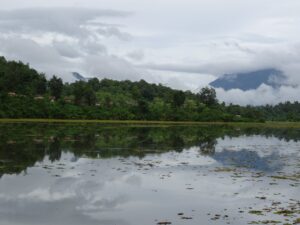



The centre puts on an excellent programme for guests; my day started with a walk up into the jungle with a mahout to fetch his elephant. It was a long, muddy walk in rainy season but suddenly we rounded a corner and this was my very first sighting of an elephant. It took my breath away.
Elephants have very big, flat feet which means they hardly make a sound as they move through the jungle. An elephant can be standing 3 feet away from you and you won’t realise it’s there. Not at all like the elephants in The Jungle Book then!
We watched the mahouts enjoy bathtime with the elephants.

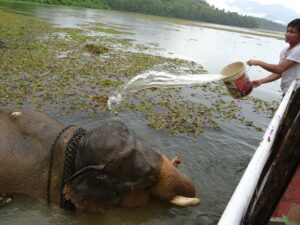
Once an elephant has become domesticated it will never be able to survive in the wild on its own, which is why a working elephant is dependent on it’s mahout for life. Now that the ECC elephants have been given the opportunity to retire from illegal logging work, they still need to earn their keep through tourism. It’s also important for the elephants to exercise regularly which is why the mahouts still ride the elephants. The mahouts showed us how to get up on to the elephant and taught us some simple commands – the elephant driving test!


Later in the day we took a boat to a secluded lagoon and from across the water we watched a mother and two year old toddler have a bath. An elephant pregnancy lasts for two years. During this time domestic elephants cannot work, so a mahout loses his income; one of the reasons why the birth rate has dropped so dramatically. The ECC is working to alleviate this problem by offering the mahout of a pregnant or nursing elephant lodgings, food and work at the centre.
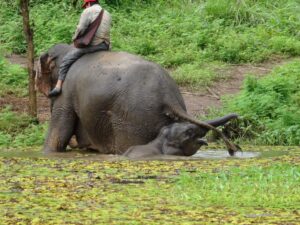

This is the elephant veterinary centre and the volunteer vet showed us around.



Another baby elephant, an orphan was found all alone in the jungle at the age of 6 months. The baby has been ‘adopted’ by a very protective 19 year old female elephant at the ECC. The centre volunteers have to feed little Noi Noi 6 times a day.

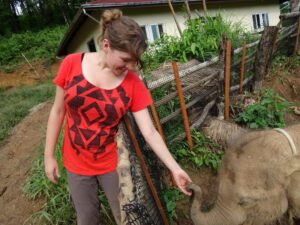
I loved my time at the ECC. Although a paying visitor and made to feel very welcome, the centre’s priority is quite rightly the elephants and the local Lao people who work there supported by a few Western staff and volunteers. I came away much better informed about elephant conservation issues in Laos and with the feeling that great work is being done at the centre.
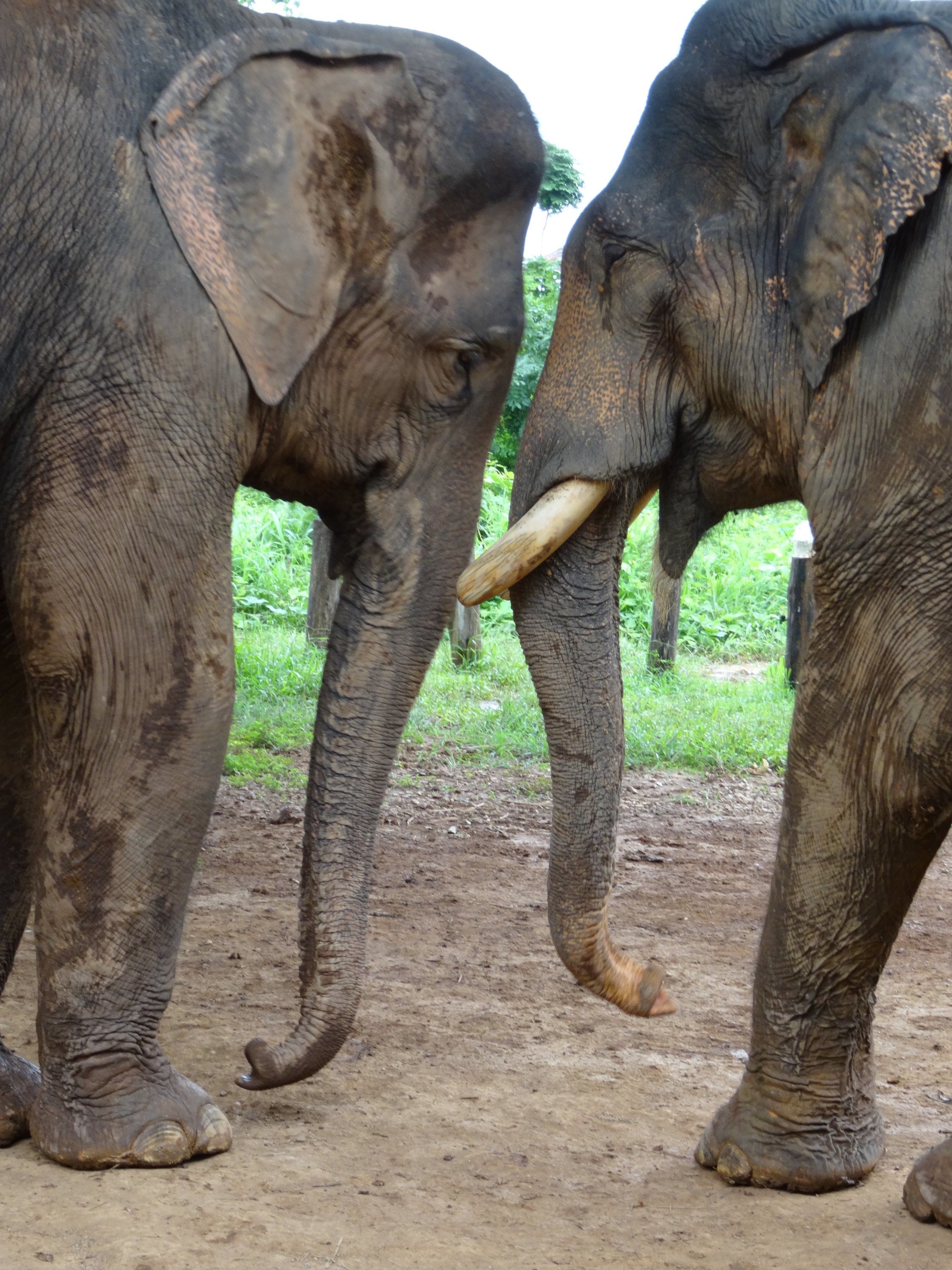





Comments are closed.